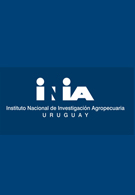ABSTRACT.- Group A rotavirus (RVA) infections are a leading cause of neonatal diarrhoea in foals. Neonatal mice could serve as a useful tool to study the pathogenesis of equine RVA (ERVA) as well as a preclinical model for assessment of vaccine efficacy. This study aimed to comparatively evaluate the clinical, virological and pathological features of ERVA G3P[12] and G14P[12] infection in neonatal mice and compare them with porcine OSU G5P[7] and bovine UK G6P[5] RVA reference strains. Neonatal mice orally inoculated with equine, bovine and porcine RVA developed short-lived diarrhoea at variable rates, G14P[12] (61%) and G3P[12] (88%). Viral replication kinetics for all strains were characterized by a gradual decline in viral load to levels below the limit of detection by 72-96 h post-infection (hpi), in line with the reduction in the number of infected enterocytes demonstrated via RNAscope® in situ hybridization. Importantly, the clinical and viral replication kinetics correlated with significant microscopic intestinal alterations characterized by enterocyte vacuolation, scalloping and hyperplasia with a peak occurring at 48 hpi and persisting until at least 96 hpi. Overall, neonatal mice develop a disease phenotype of short duration following infection with equine, porcine and bovine RVA strains characterized by diarrhoea and pronounced histological alterations in the intestinal villi. The limited intestinal viral replication is likely associated with host restriction. The clinical and pathological phenotypes developed by neonatal mice following experimental infection could serve as a preclinical tool to assess vaccine efficacy and for pathogenesis studies involving RVA of equine, porcine and bovine origin. © 2025 The Authors.

